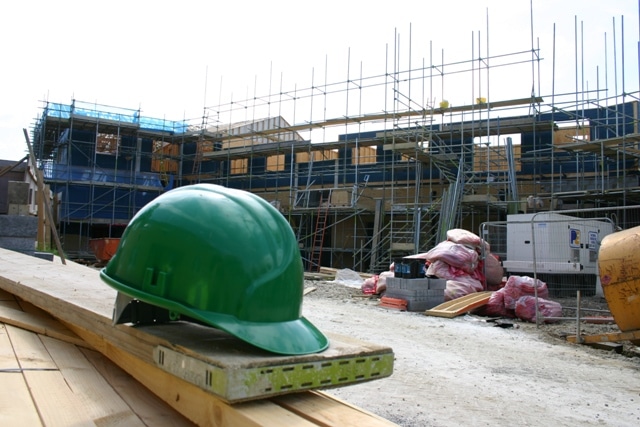The holy grail of sustainable construction, namely reduced thermal conductivity with relatively small and simple changes to construction methods at little or no extra cost, is in sight, says Paul Joyner, director of sustainable building solutions at Travis Perkins.
The discussion around sustainability has, for too long, been centred on the job that renewable technologies can do in bringing both new build and our ageing housing stock into the low carbon future.
However, there is an increasing body of opinion that building fabric, and the role that it can play in making homes more sustainable, has been overlooked. I’ll go further: my own view is that we need to take a fabric first approach before any renewables are ‘bolted’ on to a property; and specialist subcontractors installing insulation, walls and ceilings have a vital role to play.
A fabric first approach is vital if we are to make a real dent in our carbon reduction targets and getting builders on board is the first step. Fabric first provides a simple solution because, by making just small changes to the products and the construction methods used, it is possible to achieve what too many have wrongly regarded as the holy grail of sustainable construction, namely significantly reduced thermal conductivity with relatively small and simple changes to construction methods at little or no extra build cost.
Why is a fabric first approach best? Firstly, because the building fabric will always remain in place, require minimal maintenance and offer a lifetime of performance. The correct order of procedure should be to get the fabric right first and then maximise the performance of renewable technologies if a choice is made to deploy them.
Secondly, buildings should not just be green; they should be better quality homes. A fabric first approach does both of these things.
However, there is also a need for builders, subcontractors and merchants to push the boundaries and aim higher. With a little help and advice most builders should be able to achieve a Code for Sustainable Homes Level 3 house with a fabric first approach. In my experience, a few further tweaks to the type of products specified and Code Level 4 is attainable if builders are given the right advice. My argument is that we need to be aiming higher, by using the right fabric approach plus renewables, all the way to Code Level 6.
Of course, not all builders have the ability or want to create a Passivhaus, but aiming for Code Level 4 or 5 in all buildings is better than building only a few homes to Passivhaus standards.
For this reason, Sustainable Building Solutions, a division of Travis Perkins plc, set up to provide help, support and expert technical assistance to the construction industry, has produced a set of standard construction drawings for new-build and retrofit with the objective of being an information resource and advice service to customers with the ultimate aim of maximising the fabric’s contribution to SAP.
All of the drawings have been completed with the BRE and are LABC-registered. Anyone using these drawings, and crucially all the products specified within the details, will find passing the SAP testing much easier, for three key reasons.
Firstly, using these drawings reduces the need to use default SAP figures. Secondly, these drawings make some very simple, but significant, changes to standard build methods which mean the fabric can be used to its maximum capability. Finally, the drawings have been independently tested and verified by BRE, LABC and the HBF.
My view is that if a house is built well and with the right products it will last for hundreds of years. Bolting technology onto an unprepared shell won’t make much of a difference. If sustainable buildings are to become a way of life we need to start with fabric first.



